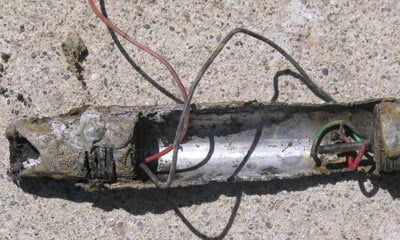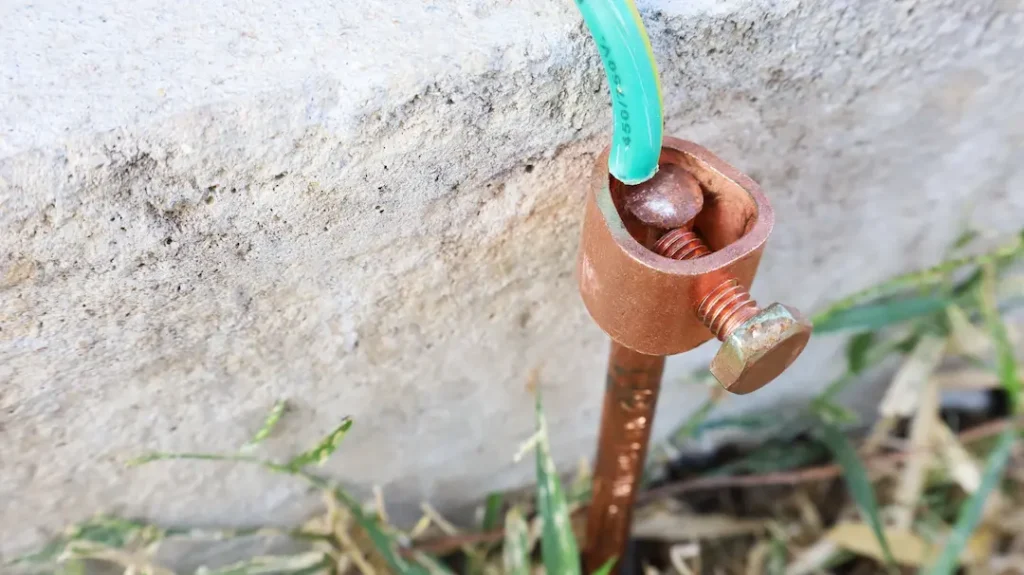With pressure transducers, grounding is an important aspect for accurate measurement. At Automation Products Group, Inc. (APG), we supply many industrial pressure transducers that can be safely and easily grounded. But what is grounding and why is it important? We’ll describe why it’s important to keep your pressure transducer grounded and the best practices in this article.

What is Grounding?
Grounding refers to connecting a a metal device to the earth through a connector. With pressure transducers, the metal housing of the sensor is connected to the earth through a wire. This allows a build up of electricity to have somewhere to go, redirecting it to the earth instead of traveling directly through the sensor.
Grounding can be used to reduce unwanted electrical noise. Grounding is mainly used as a safety feature. With ungrounded sensors, static electricity or transient voltage can build up. With a grounded sensor, the leaking currents or stray voltage are redirected into the ground instead. This protects the sensor’s sensitive electronics from damage and also keeps personnel safe from electrical shock.
Why Grounding Is Important
Improper grounding can lead to a host of issues in your pressure transducer, or even risks to personnel, such as:
- Sensor operational issues
- Electrical failures
- Unreliable or inaccurate sensor readings
- Signal instability
- Total device failure
- Personnel safety hazards, such as electrical shock or fire
Properly grounding a sensor is critical to avoid these risks. There are two approaches to ground a pressure transducer: using a case grounding or using a ground wire.
Case Grounding a Pressure Transducer
The first approach to ground a pressure transducer is to use a case ground. This means that the manufacturer has designed the transducer to make contact to earth ground through the case or housing of the sensor. This approach allows the transducer to be naturally grounded during the installation process.
Using a Ground Wire
The second approach to ground a pressure transducer is to use a ground wire that’s connected away from the actual sensor. The distance depends on the cable length and the specific application. The lead wires and ground wire are installed into a controller box. This is the case when a common ground is needed between the controller, sensor, and other equipment operating as a system. Most of the pressure transducers here at APG use a ground wire as the primary grounding method.
Best Practices With Grounding
Whether using a case ground or a ground wire, either approach is an appropriate way to ground your pressure transducer. Problems can arise when both methods are used together.
Submersible pressure transducers are a good example. With the submersible pressure transducers, the potential of the control box could easily be a different potential than the ground potential of the fluid the sensor is submersed in. This difference in potential generates a voltage and acts like a battery. It can cause performance problems, and in more extreme cases, can even cause corrosive electrolysis.
The best practice is to use one method or the other to ground your sensor. Many sensors are designed to have both options available. If you use the case ground approach, then don’t connect the ground wire to anything. If you use the ground wire approach, then ensure the case hasn’t been grounded by the manufacturer or the application method.
With proper grounding, your pressure transducer can safely operate without worry of excess electrical voltage causing damage to your sensor. If you would like to learn more about grounding, or have further questions on how our sensors are grounded, please feel free to reach out to our application engineers. They’ll be happy to answer your questions.
WRITTEN BY

Sami T.
Sami Thompson is APG’s Marketing Technical Writer and has been with the company since 2022. With a master’s degree in English from Utah State University and a 40-page thesis publication under her belt, Sami has a demonstrated strong writing background. In her free time, Sami enjoys reading and birdwatching.


